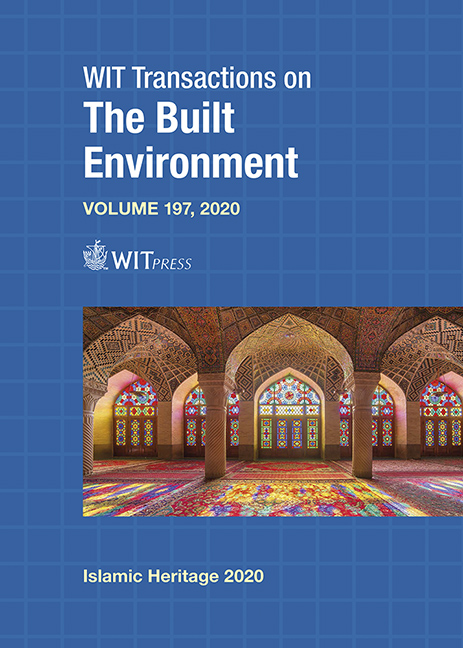TOURISM-BASED APPROACH TO CONSERVING THE BUILT HERITAGE SITES IN THE HOLY CITY OF MAKKAH, SAUDI ARABIA
Price
Free (open access)
Transaction
Volume
197
Pages
13
Page Range
139 - 151
Published
2020
Size
1,065 kb
Paper DOI
10.2495/IHA200121
Copyright
WIT Press
Author(s)
MOHAMMED BAGADER
Abstract
Conserving built heritage is one of the indications of a nations’ pride, development and sophistication. Besides, tourism becomes an essential tool to ensure conserving built heritage sites in order to maintain their physical condition, as well as to promote them for economic vitality. Many developed and developing countries use heritage sites as an economic source for tourism destination attractions; however, the Holy city of Makkah (Mecca) in Saudi Arabia is considered as Muslims’ most important city ever, which still has some built heritage sites that still exist now, due to a reasonable reason (expansion to accommodate an enormous number of pilgrims). More than 3 million pilgrims visit Makkah annually, eager to perform religious practices. Some of them visit at least some of the existing heritage sites or go to see the remnants of them. These sites are either architectural monuments (such as the palaces of Kuwair and King Saud), old markets where trade is still practiced (such as the Jaroul market), old mosques (such as Al-Baya’a Mosque in Mina), or sites related to religious occasions such as Ghar Hira’a (Hira’a Cave). These built heritage sites are some of the last remaining memories of Makkah, and many experts stress the importance of preserving and re-using them, which aligns with the Kingdom’s Vision 2030. This paper aims to propose an approach to conserving the built heritage remaining in Makkah, by using tourism as a driving tool. This paper uses a qualitative method by conducting a systematic literature review and presenting one case study of Kuwair Palace (built in 1370 AH/1951 AD).
Keywords
built heritage, conservation, heritage sites, Kuwair Palace, Mecca, Muslim pilgrimage, Saudi Arabia, tourism, urban planning




